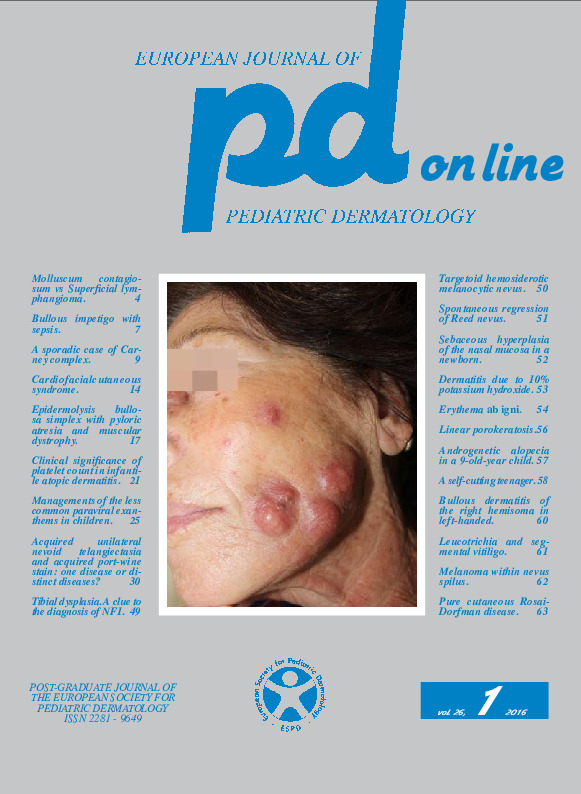Pure cutaneous Rosai-Dorfman disease.
Downloads
DOI:
https://doi.org/10.26326/2281-9649.26.1.1205How to Cite
Garofalo L., Cerroni L. 2016. Pure cutaneous Rosai-Dorfman disease. Eur. J. Pediat. Dermatol. 26 (1):63-4. 10.26326/2281-9649.26.1.1205.
pp. 63-4
Abstract
Sinus histiocytosis with massive lymphadenopathy (Rosai-Dorfman disease) belongs to class IIb histiocytosis. The latter includes benign reactive histiocytosis characterized by the accumulation in the tissues of histiocytes other than Langerhans cells and dermal dendrocytes. It is not very rare if you consider that a revision of the year 2000 (2) identified about 1,000 cases. It is named this way for the massive lymphadenopathy histologically characterized by sinuses dilated and filled with large histiocytes that phagocyte lymphocytes and other blood cells (emperipolesis). Frequent is the involvement of other organs in addition to the lymph nodes, especially the skin; the face is involved in 11.2% of the cases affecting the skin (1); the latter may also be the only organ concerned in the absence of lymphadenopathy; cases with exclusive skin involvement represent about 3% of all cases (2). The majority of cases begin before 30 years, but any age can be affected; in the pure cutaneous cases prevail female sex and old age; however, the youngest case described in the literature was aged 3 years (4). The disease is usually characterized by a benign course and spontaneous regression in 50% of cases (4); many treatments were tried, but none proved to be better than the others (3).Keywords
Sinus histiocytosis, Rosai-Dorfman disease, Skin

